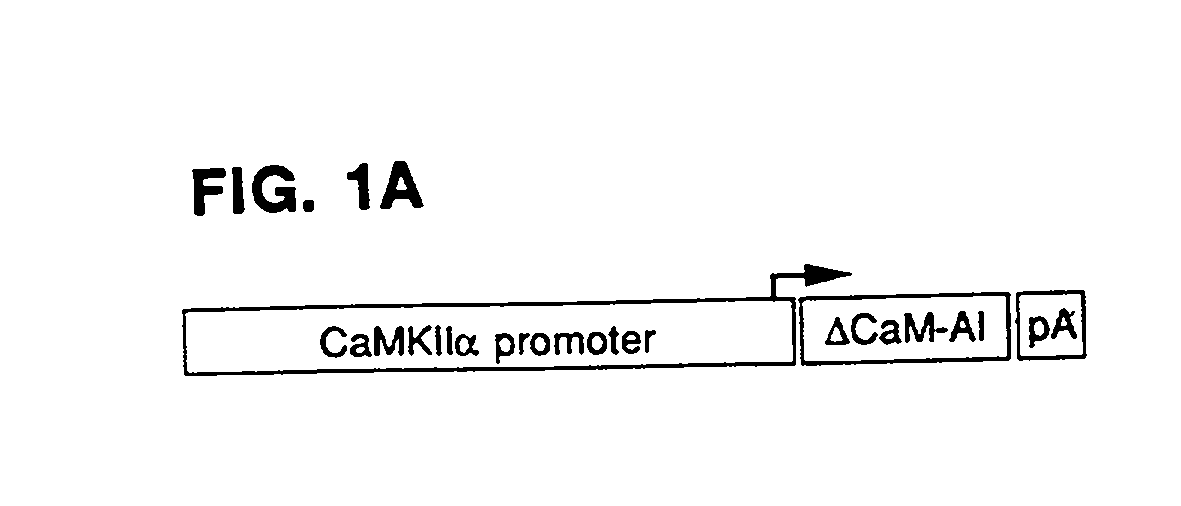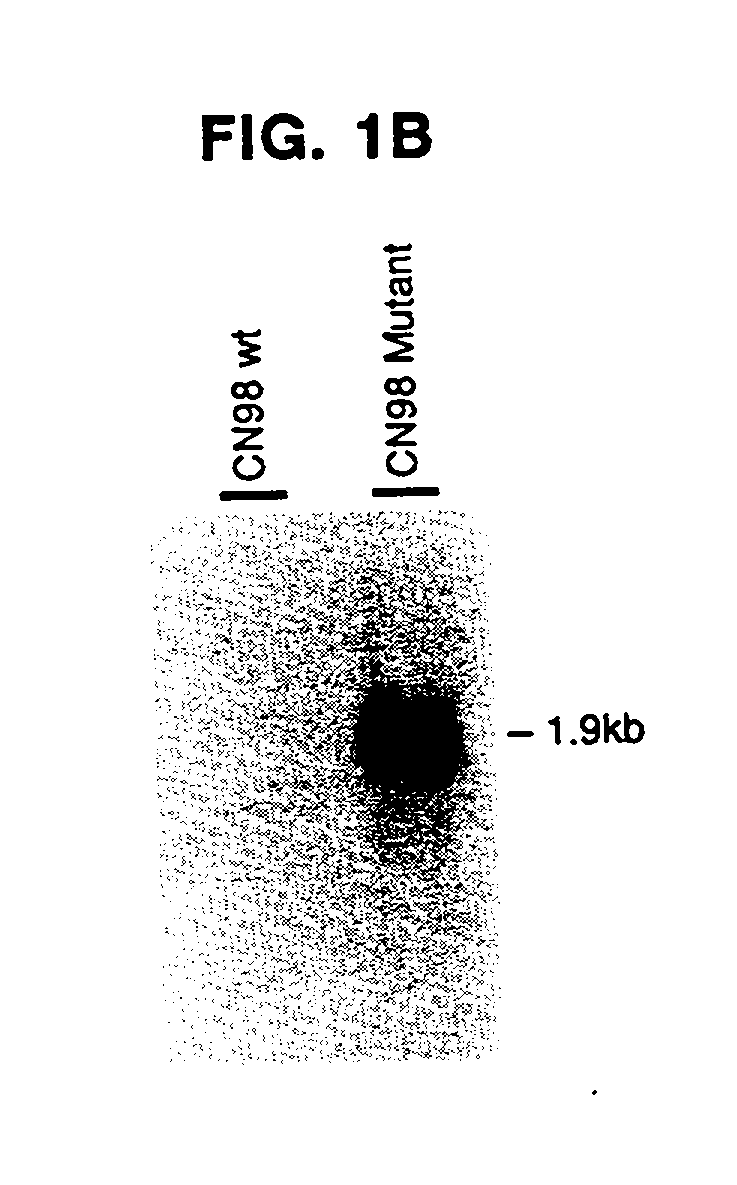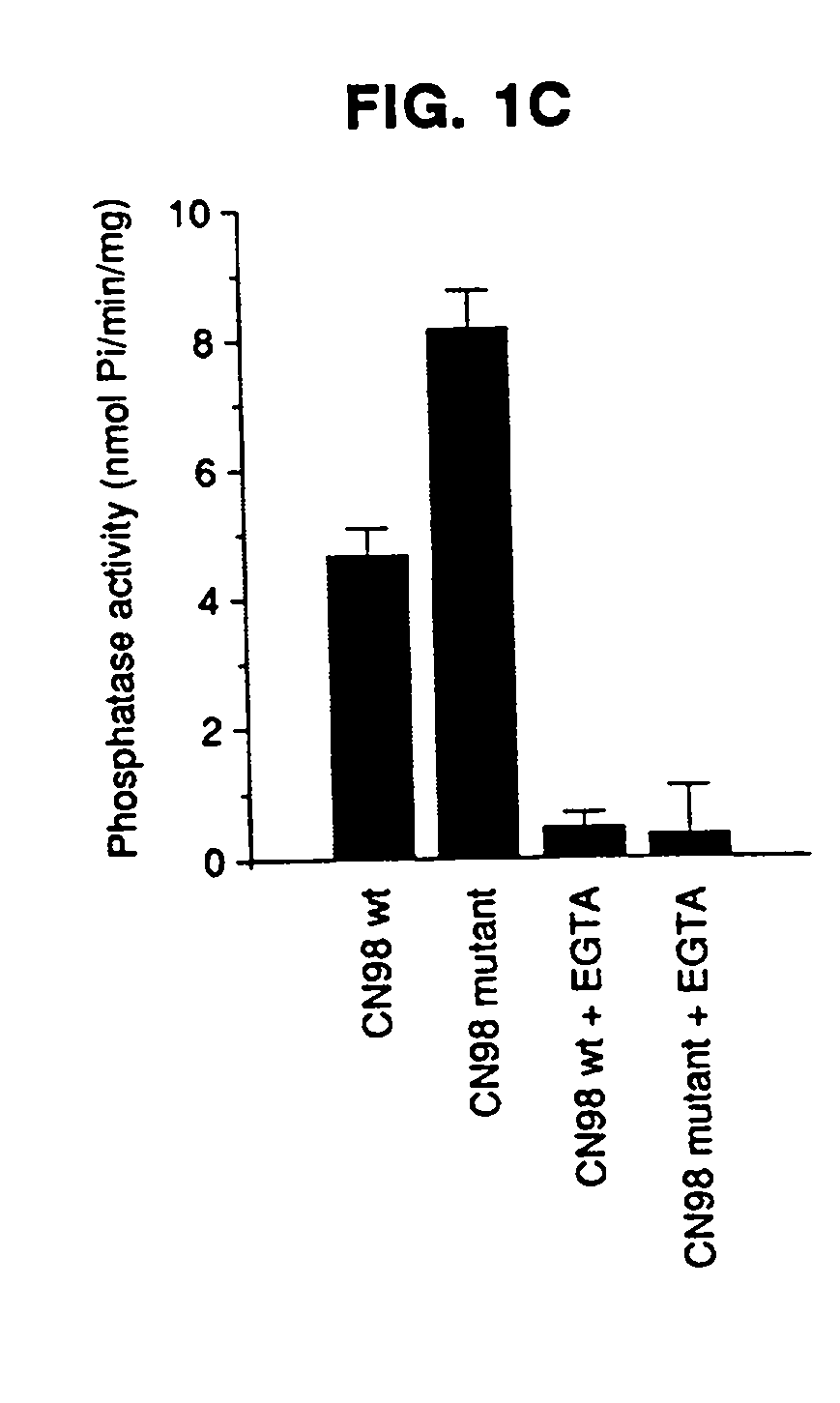Medthods for improving long-term memory storage and retrieval
a technology of applied in the field of medicine for improving long-term memory storage and retrieval, can solve the problems of reducing kinase activity through both pharmacological and genetic means, impairing the induction or maintenance of both long-term facilitation in aplysia, and limited study of phosphatases in the hippocampus, so as to improve long-term memory, improve brain-specific calcineurin activity, and save the long-
- Summary
- Abstract
- Description
- Claims
- Application Information
AI Technical Summary
Benefits of technology
Problems solved by technology
Method used
Image
Examples
example 1
[0088] Genetic and Pharmacological Evidence for a Novel, Intermediate Phase of Long-Term Potentiation (I-LTP)Suppressed by Calcineurin
[0089] To investigate the role of phosphatases in synaptic plasticity using genetic approaches, we generated transgenic mice that overexpress a truncated form of calcineurin under the control of the CaMKII( promoter. Mice expressing this transgene show increased calcium-dependent phosphatase activity in hippocampus. Physiological studies of these mice and parallel pharmacological experiments in wild-type mice reveal a novel, intermediate phase of LTP (I-LTP) in the CA1 region of hippocampus. This intermediate phase differs from E-LTP in requiring multiple trains for induction, and in being dependent on PKA. It differs from L-LTP in not requiring new protein synthesis. These data suggest that calcineurin acts as an inhibitory constraint on I-LTP that is relieved by PKA. This inhibitory constraint acts as a gate to regulate the synaptic induction of L-L...
example 2
[0161] Restricted and Regulated Overexpression Reveals Calcineurin as A Key Component in the Transition From Short-term to Long-term Memory
[0162] To investigate whether phosphatases play a role in memory storage, we assessed hippocampal-dependent memory in transgenic mice by expressing, primarily in the hippocampus, a truncated form of calcineurin. These mice have normal short-term memory but have a defect in long-term memory that is evident on both a spatial task (the spatial version of the Barnes maze) and on a visual recognition task, thus providing genetic evidence for the role of the rodent hippocampus in spatial as well as non-spatial memory storage. Further on the Barnes maze, the defect in long-term memory could be fully rescued by increasing the number of training trials. These results suggest that the transgenic mice overexpressing calcineurin have the capacity for long-term memory but have a specific defect in the transition between short- and long-term memory which preve...
example 3
[0223] Inducible and Reversible Gene Expression with the rtTA system for the Study of Memory
[0224] To obtain rapidly inducible and reversible expression of transgene in forebrain of the mouse, we have combined the reverse tetracycline-controlled transactivator (rtTA) system with the CaMKII.alpha. promoter. Using calcineurin and a reporter gene, we show that doxycycline induces maximal expression of the transgene within six days. Expression of calcineurin in turn leads to an impairment in an intermediate form of LTP (I-LTP) in hippocampus and to a defect in spatial memory in the Morris water maze. Mutant mice that express the calcineurin transgene transiently, after spatial memory was stored, have an apparent defect in the retrieval of the spatial information. This retrieval defect is not due to a disruption in memory storage since it could be reversed when the transgene expression was turned off by doxycycline removal. These results demonstrate that the rtTA system can be used as a ...
PUM
| Property | Measurement | Unit |
|---|---|---|
| time | aaaaa | aaaaa |
| pH | aaaaa | aaaaa |
| distance | aaaaa | aaaaa |
Abstract
Description
Claims
Application Information
 Login to View More
Login to View More - R&D
- Intellectual Property
- Life Sciences
- Materials
- Tech Scout
- Unparalleled Data Quality
- Higher Quality Content
- 60% Fewer Hallucinations
Browse by: Latest US Patents, China's latest patents, Technical Efficacy Thesaurus, Application Domain, Technology Topic, Popular Technical Reports.
© 2025 PatSnap. All rights reserved.Legal|Privacy policy|Modern Slavery Act Transparency Statement|Sitemap|About US| Contact US: help@patsnap.com



